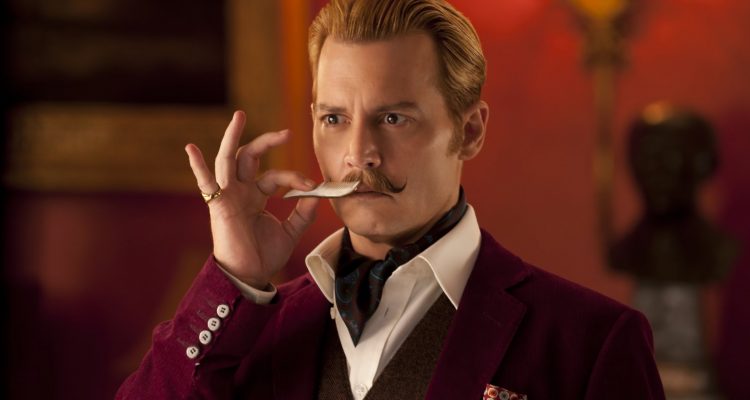 “Fear & Loathing In Las Vegas” (1998)
“Fear & Loathing In Las Vegas” (1998)
Of course, sometimes the freaks are more fun. Decades in the works (with Jack Nicholson, Dan Aykroyd, John Malkovich and John Cusack all having been linked with the lead at some point), the film version of Hunter S. Thompson‘s seminal “Fear And Loathing In Las Vegas” finally made it to screens under the eye of Terry Gilliam. And once Thompson himself met with Depp, they became fast friends, and he insisted that the actor was the only possible choice to play Raoul Duke, his very-thinly-veiled surrogate in the tale (the two remained inseperable; Depp paid for Thompson’s funeral, and reprised the role last year in “The Rum Diary“). And really, it’s almost impossible to imagine anyone else in the part. Depp is almost unrecognizable under a (lack of) hairpiece, hat and glasses, often filmed in extreme close-up with wide lenses by Gilliam, and he lends a furious comic verve to the part that’s almost reminiscent of a lost, high-as-a-kite Marx Brother. His manic energy is countered neatly by the deadpan narration, and if you’ve ever seen footage of Thompson, you know Depp isn’t exaggerating in the slightest. And again, his chemistry with Benicio Del Toro, as attorney Dr. Gonzo, is outstanding — a reminder of how generous he can be, when he wants. The film around the duo is, it should be said, something of a mess, but it’s worth sitting through just for the performances.
 “Pirates of the Caribbean: Curse of the Black Pearl” (2003)
“Pirates of the Caribbean: Curse of the Black Pearl” (2003)
It is only with a significant effort of will that we can cast our minds back to 2003-era Johnny Depp without them snagging on some of the more egregious clunkers the actor would subsequently be involved in. And it’s especially hard in the case of “Pirates of the Caribbean: Curse of the Black Pearl,” which spawned three of the aforementioned clunkers in its sequels. But we must not visit the sins of the sons upon the father, and instead we need to remember just how bloody good Depp was in this role, in this film. A swaggering, ludicrous, slurring rockstar rogue, his Captain Jack Sparrow proved the seasoning that spiced up proceedings into a heady, fun-packed brew: it was an interpretation so gonzo and exaggerated that it’s hard to believe it made it into a Disney franchise, let alone pretty much made a Disney franchise into a global success. Because there’s the rub — Depp’s performance in ‘Black Pearl’ proved both the film’s chief blessing and its, er, biggest curse, in that it was so universally adored (even garnering Depp the first of his three Best Actor Oscar nominations), that sequel scripts were pushed forward immediately on which clearly the only note the execs ever gave was “More Sparrow!” But of course part of the reason Depp is so great in the first ‘Pirates’ is that there isn’t that much of him — again, he serves as the seasoning, not the main dish. But the logic went that since he was the most fun part of the original, he should be the focus going ahead so that by the time of “Dead Man’s Chest” we were being asked to suffer through dream sequences in which multiple Sparrows appear (presumably the only way they could think of to cram in even more Depp). Dammit, we’re talking about the sequels again, sorry. Let’s get back to 2003. Back then Depp was an actor universally admired but without a major franchise or even that many true box-office home runs to his name, and he was looking to make a more family-oriented film. Disney just happened to have a not-especially-promising sounding movie in the works, based on one of their theme park rides. To go from that to a recording-breaking blast featuring a performance so OTT and original that it’s kind of hard to remember that the Keith Richards/pirate association was not, simply, always there, merits praise. What makes it an essential of Depp’s, though, is the giggly fun and “can you believe I’m getting away with this?” feel to the portrayal and also the fact that we cannot account for his subsequent career without it; occasionally for better but mostly, sadly, for worse.
— Oliver Lyttelton, Jessica Kiang

